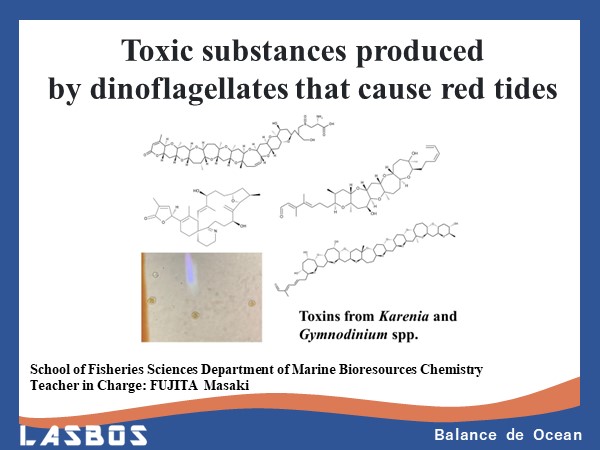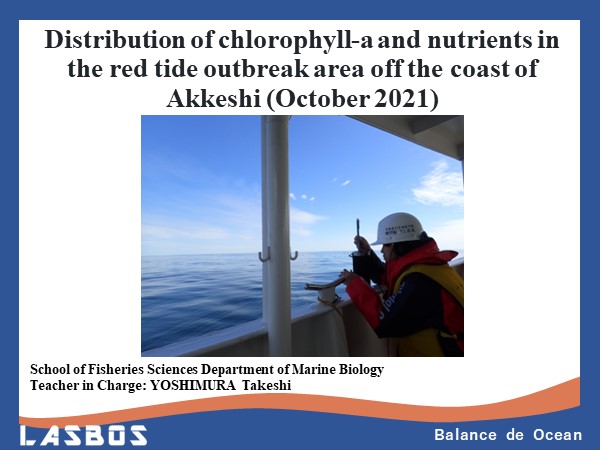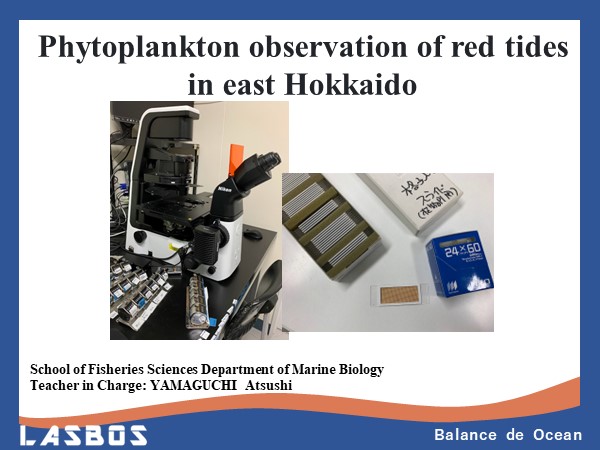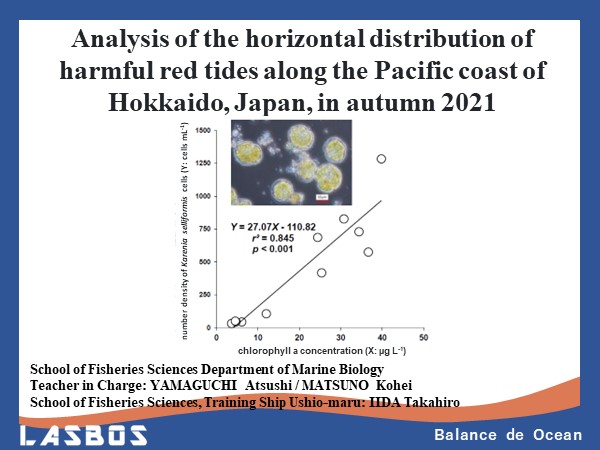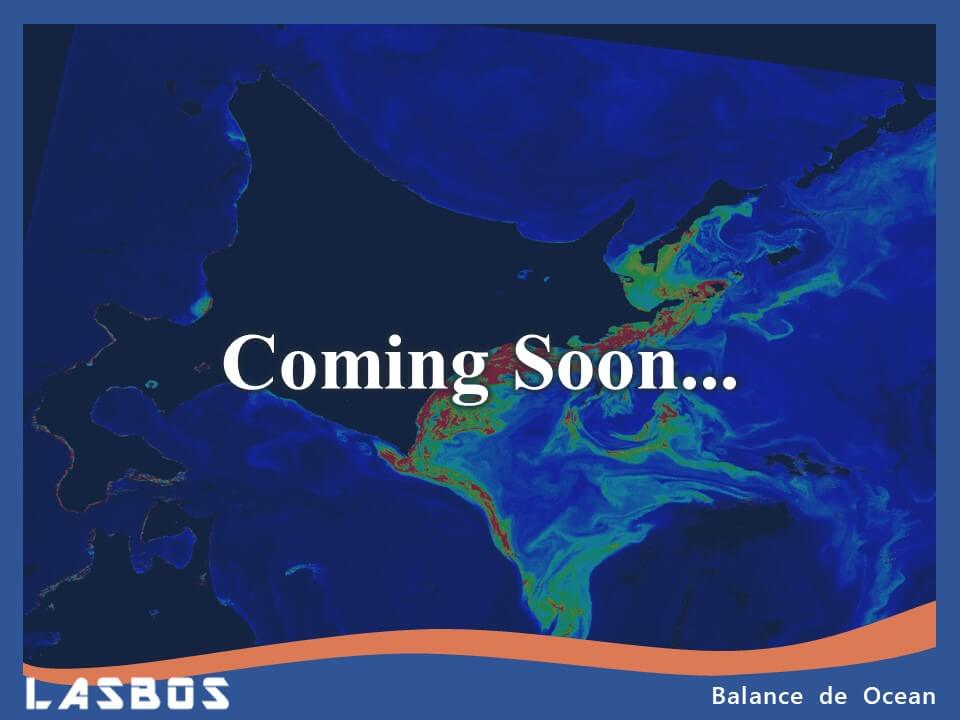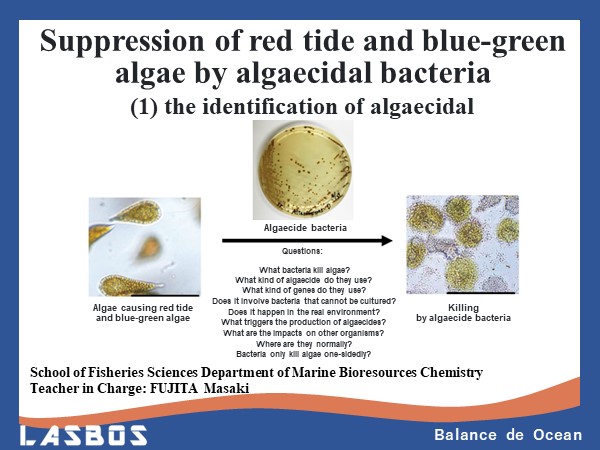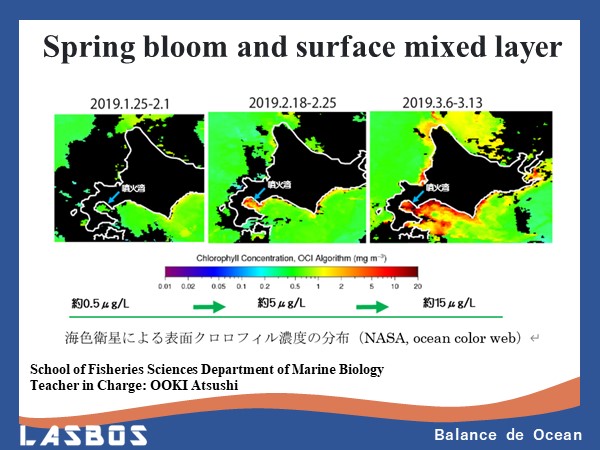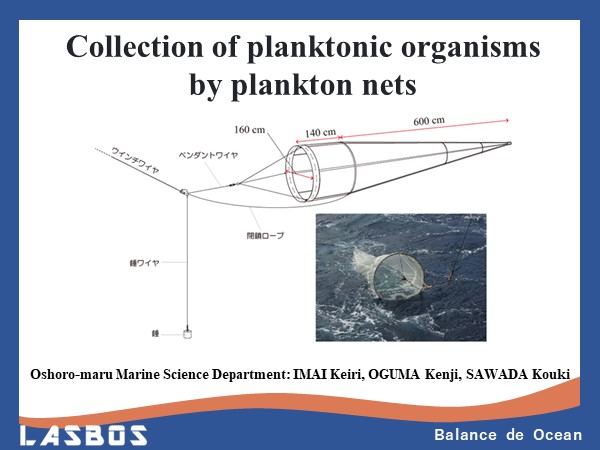Red tides in the sea of east Hokkaido
Rangkaan topik
-
-
-
A phenomenon in which phytoplankton in seawater proliferate abnormally, causing the sea to appear to change color
Diatoms, raphidophytes, and dinoflagellates are representative groups
Different types of plankton produce different colors, such as reddish-brown and dark brown
Reported frequently in inner bays of western Japan, such as the Seto Inland Sea and Ariake Sea
Red tides increased dramatically during the period of rapid economic growth due to the discharge of nutrients (nitrogen and phosphorus) and organic matter
The number of outbreaks has been decreasing due to stricter effluent standards
Causing damage to fisheries
Fish become unable to breathe due to gill damage
Oxygen is consumed to break down the plankton, resulting in oxygen deprivation
Toxins produced by the plankton act
This red tide was observed in the open sea, not in closed sea areas, and has never been reported in Japan, has it?
-
Red tide outbreak was confirmed in Akkeshi Bay on September 13, 2021
Discovered by associate professor ISADA of Akkeshi Marin Station, Hokkaido University
Confirmation that the dominant species is Karenia selliformis(Iwataki et al., 2021)
This is the first report of red tide in Karenia selliformis in Japan
Extensive damage to fisheries
As of December 10, 2021, Hokkaido reported a total of 8.1 billion yen in damage, including 2,800 tons of sea urchins and 28,000 salmon
The Kushiro Fisheries Research Institute, Hokkaido Research Organization, Fisheries Research Department discovered the mass death of a benthic organism, “sipunculids” on the seafloor 24 km off the coast of Tokachi at a depth of 130 m (Hokkaido Shimbun Press, December 10, 2021)
According to the announcement by the Hokkaido Research Organization, Fisheries Research Department, the red tide is likely to have almost ended as of November 22 (Central Fisheries Research Institute, Hokkaido Research Organization, Fisheries Research Department)
-
Data from the satellite Global Change Observation Mission - Climate “SHIKISAI” of JAXA can be used to determine temporal changes in the distribution of chlorophyll, an indicator of the amount of phytoplankton on the ocean surface.
As a result, it appears that seawater with high phytoplankton content is flowing from around the Northern Territories to the east Hokkaido coast. This suggests that the red tide has moved with the flow of the cold current Oyashio Current.
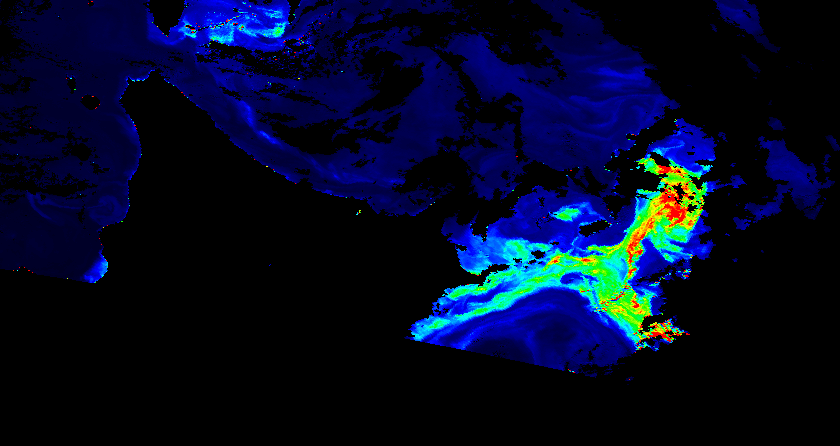 September 4, 2021
September 4, 2021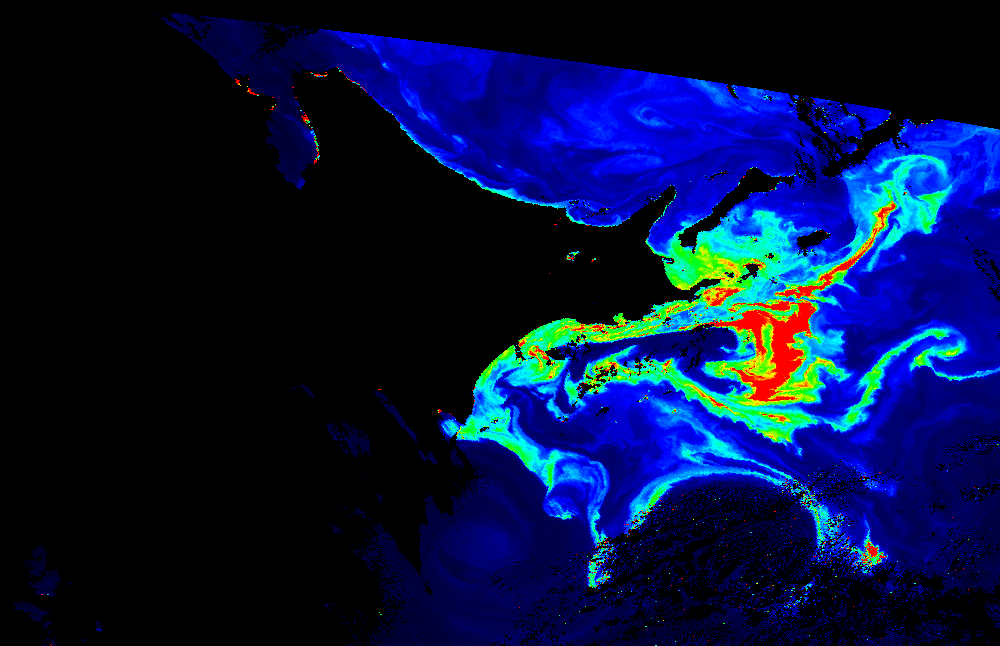 September 16, 2021
September 16, 2021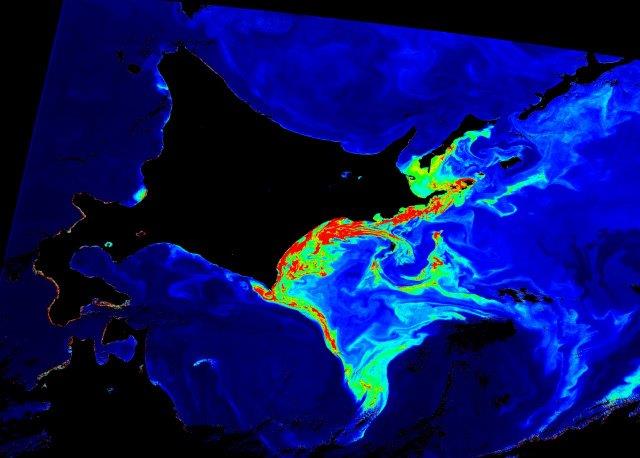 October 9, 2021
October 9, 2021 -
Red tide occurred in the waters around Kamchatka Peninsula, Russia, in late September 2020
The dominant species is Karenia selliformis
Genetic information of this K. selliformis are 100% identical genetically with K. selliformis of the 2021 Hokkaido red tide (Iwataki et al., 2021)
A part of the red tide may reach the sea area around the Northern Territories in a few months by riding on the Oyashio Current (Kuroda et al., 2021)
Ocean heat waves occurred over a wide area of the Pacific Ocean, including around Hokkaido, Japan, in July and August 2021
This is the largest ocean heat wave on record with water temperatures rising max 5℃ higher than normal
Causal relationship between ocean heat waves and red tide outbreaks is unknown
-
Time of emergence Sea area Causal species Estimated cause of occurrence September, 1972 off the mouth of the Tokachi River dinoflagellates the genus Gymnodinium After heavy rainfall, the river outflow was followed by a series of calm days, which allowed river-derived nutrients to accumulate near the sea surface.
September, 1983 Urahoro-cho to Erimo-cho dinoflagellates the genus Gymnodinium same as above September, 1985
off the mouth of Tokachi River to Taiki Fisheries Port dinoflagellates the genus Gymnodinium and Prorocentrum same as above September, 1986 off the mouth of Rekifune River to mouth of Toyoni River raphidophytes Heterosigma akashiwo same as above October to November, 2015 Hakodate Bay dinoflagellates Karenia mikimotoi A part of the red tide that occurred on the Japan Sea side, such as Kyushu and San-in migrated on the warm Tsushima Warm Current and proliferated.
July, 2016 Hakodate Bay raphidophytes Heterosigma akashiwo July, 2018 Hakodate Bay raphidophytes Heterosigma akashiwo September to November, 2021 Pacific coast of east Hokkaido dinoflagellates Karenia selliformis

